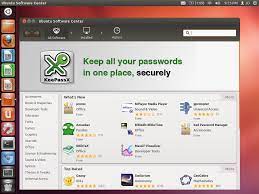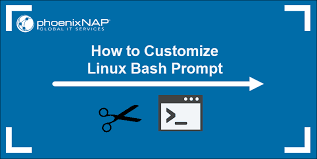Crafting Your Identity: The Art of Personalized Customization
Customize Your Experience: Personalizing Your World
In today’s digital age, personalization is key. From customizing your smartphone’s interface to tailoring your social media feed, the ability to make things your own has never been more important. This concept extends beyond gadgets and apps – it’s about creating a world that reflects who you are and what you value.
Why Customize?
Customization allows you to express your individuality and preferences in a world filled with mass-produced products and generic experiences. By tailoring your environment to suit your tastes, you can create a sense of ownership and identity that resonates with you on a deeper level.
Ways to Customize
There are countless ways to customize your surroundings, both online and offline. Whether it’s selecting a unique theme for your website, designing a personalised workspace, or curating a playlist that speaks to your soul, the possibilities are endless. Embrace creativity and experiment with different options until you find what truly resonates with you.
The Power of Personalization
Personalization goes beyond aesthetics – it can also enhance functionality and improve user experience. Customising settings on your devices, organising your digital files in a way that makes sense to you, or even creating bespoke solutions for everyday challenges can streamline tasks and make life more efficient.
Embracing Change
Don’t be afraid to shake things up and try new ways of customizing your world. As you evolve and grow, so too should the things around you. Embrace change as an opportunity for self-expression and discovery, allowing yourself the freedom to adapt and refine your personal environment as needed.
The Future of Customization
In an increasingly interconnected world where technology plays a central role in our daily lives, customization will continue to be a driving force behind innovation. As we move towards a more personalised future, the ability to tailor our experiences will become even more integral to how we interact with the world around us.
9 Benefits of Customisation: Empowering Individuality and Enhancing Experience
- Express individuality
- Tailor experiences to personal preferences
- Create a sense of ownership
- Enhance user engagement
- Improve user experience
- Increase efficiency and productivity
- Promote creativity and innovation
- Adapt to changing needs and preferences
- Empower users to make choices that reflect their values
Challenges of Customisation: Navigating Complexity, Time, Compatibility, and Over-Customisation
Express individuality
Customization offers a powerful avenue for individuals to express their unique identities and showcase their personal style. By tailoring products, environments, and experiences to suit their preferences, people can communicate who they are and what they value without saying a word. Whether through customised fashion choices, personalised home decor, or bespoke digital interfaces, the ability to express individuality through customization empowers individuals to stand out in a world that often favours conformity.
Tailor experiences to personal preferences
Customization offers the invaluable benefit of tailoring experiences to personal preferences, allowing individuals to curate their surroundings in a way that resonates with their unique tastes and desires. By customizing everything from digital interfaces to physical spaces, people can create environments that reflect their personality and enhance their overall well-being. This pro of customization empowers individuals to craft a world that is truly their own, fostering a sense of ownership and connection that elevates the everyday experience.
Create a sense of ownership
Customization empowers individuals to create a sense of ownership over their environment, whether it be through personalising their digital devices or designing their physical spaces. By tailoring elements to suit their preferences and style, people can imbue a unique identity into their surroundings, fostering a deeper connection and pride in what they have created. This sense of ownership not only enhances individuality but also instils a feeling of responsibility and attachment that can positively impact one’s overall well-being and satisfaction.
Enhance user engagement
Customization has the remarkable ability to enhance user engagement by allowing individuals to tailor their experiences to suit their preferences and needs. When users have the freedom to personalise their interactions with a product or service, they feel a sense of ownership and connection that fosters deeper engagement. By offering options for customisation, businesses can create more meaningful and enjoyable experiences for their users, ultimately leading to increased satisfaction, loyalty, and active participation.
Improve user experience
Customization plays a vital role in enhancing user experience by allowing individuals to tailor their environment to suit their preferences and needs. By customising settings, layouts, and features, users can create a more intuitive and personalised interface that aligns with their unique workflow and style. This level of personalisation not only increases user satisfaction but also improves efficiency and usability, ultimately leading to a more enjoyable and productive experience for individuals interacting with a system or product.
Increase efficiency and productivity
Customizing your digital workspace and tools can significantly boost efficiency and productivity. By tailoring settings, layouts, and workflows to suit your specific needs and preferences, you can streamline tasks, reduce distractions, and work more effectively. Personalising your environment in a way that enhances your workflow can help you focus on what matters most, leading to increased output and improved time management. Customisation empowers individuals to create an optimised work environment that maximises productivity and fosters a sense of control over their daily tasks.
Promote creativity and innovation
Customization promotes creativity and innovation by empowering individuals to think outside the box and explore unique solutions to everyday challenges. When people have the freedom to personalise their environment, whether it’s through customising their workspace or designing their digital interfaces, they are encouraged to tap into their creative potential. This freedom to experiment and tailor experiences can lead to groundbreaking ideas, fresh perspectives, and innovative approaches that drive progress and inspire new ways of thinking.
Adapt to changing needs and preferences
Customization offers the invaluable benefit of adapting to changing needs and preferences. By tailoring our environments, whether digital or physical, to suit our evolving tastes and requirements, we can effortlessly adjust to new circumstances and stay aligned with our current desires. This flexibility allows us to seamlessly transition as our priorities shift, ensuring that our surroundings remain relevant and catered to our ever-changing lifestyles.
Empower users to make choices that reflect their values
Customization empowers users to make choices that align with their values, enabling them to create a digital environment that resonates with their beliefs and priorities. By tailoring settings, themes, and content to reflect personal values, individuals can curate an online experience that is not only aesthetically pleasing but also emotionally fulfilling. This level of personalisation fosters a sense of ownership and authenticity, allowing users to navigate the digital landscape in a way that is meaningful and reflective of who they are as individuals.
Complexity
Customizing, while offering a myriad of benefits, can also present a significant challenge in the form of complexity. For individuals who are not particularly tech-savvy, the process of personalising and customising their devices or digital environments can quickly become overwhelming. The abundance of options and settings may lead to confusion and frustration, making it difficult for some users to navigate and make informed decisions about how best to tailor their experience to suit their preferences. In such cases, the potential drawbacks of customization lie in the intricate nature of the task, which may deter certain individuals from fully embracing the concept.
Time-consuming
Personalizing every aspect of your environment or devices can be a time-consuming process, requiring careful consideration and adjustments. While customisation offers the opportunity to create a space that truly reflects your personality and preferences, the investment of time needed to fine-tune every detail can be daunting. From selecting themes and layouts to configuring settings, the process of personalising can quickly add up, potentially taking away from other productive activities or causing delays in getting tasks done efficiently. Balancing the desire for individuality with the practicality of time management is crucial when considering the con of customisation as a time-consuming endeavour.
Compatibility issues
Customization, while offering a sense of personalisation and uniqueness, can also present challenges in the form of compatibility issues. When users extensively customise their systems or devices, they run the risk of encountering compatibility problems with software updates or new devices. These issues can disrupt functionality and lead to frustrating user experiences, highlighting the importance of striking a balance between personalisation and maintaining compatibility with evolving technologies.
Over-customization
Over-customization can lead to a detrimental outcome when taken to excess. The risk of clutter and disorganisation looms large when customization goes unchecked, potentially overwhelming the user with too many options or features. This cluttered experience can not only hinder productivity but also detract from the enjoyment of the customised environment. Striking a balance between personalisation and functionality is crucial to avoid falling into the trap of over-customization, ensuring that the tailored experience remains streamlined and effective for its intended purpose.






